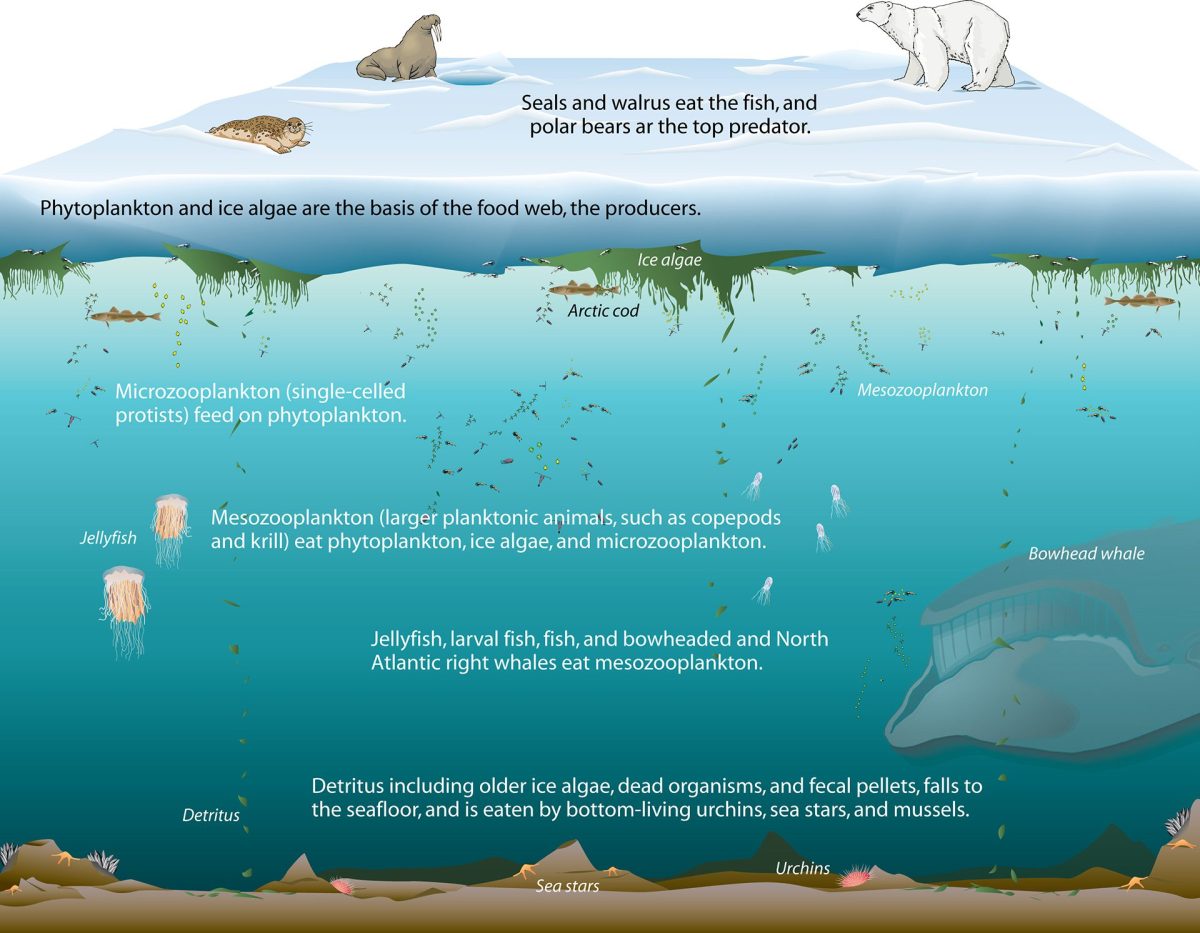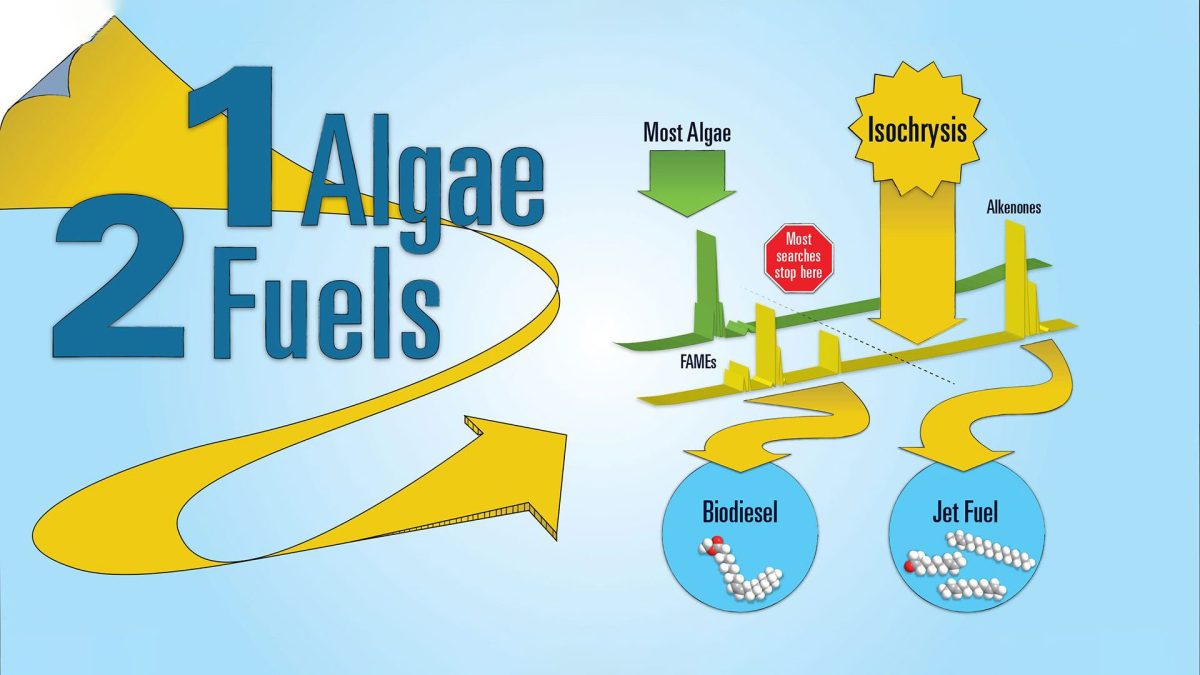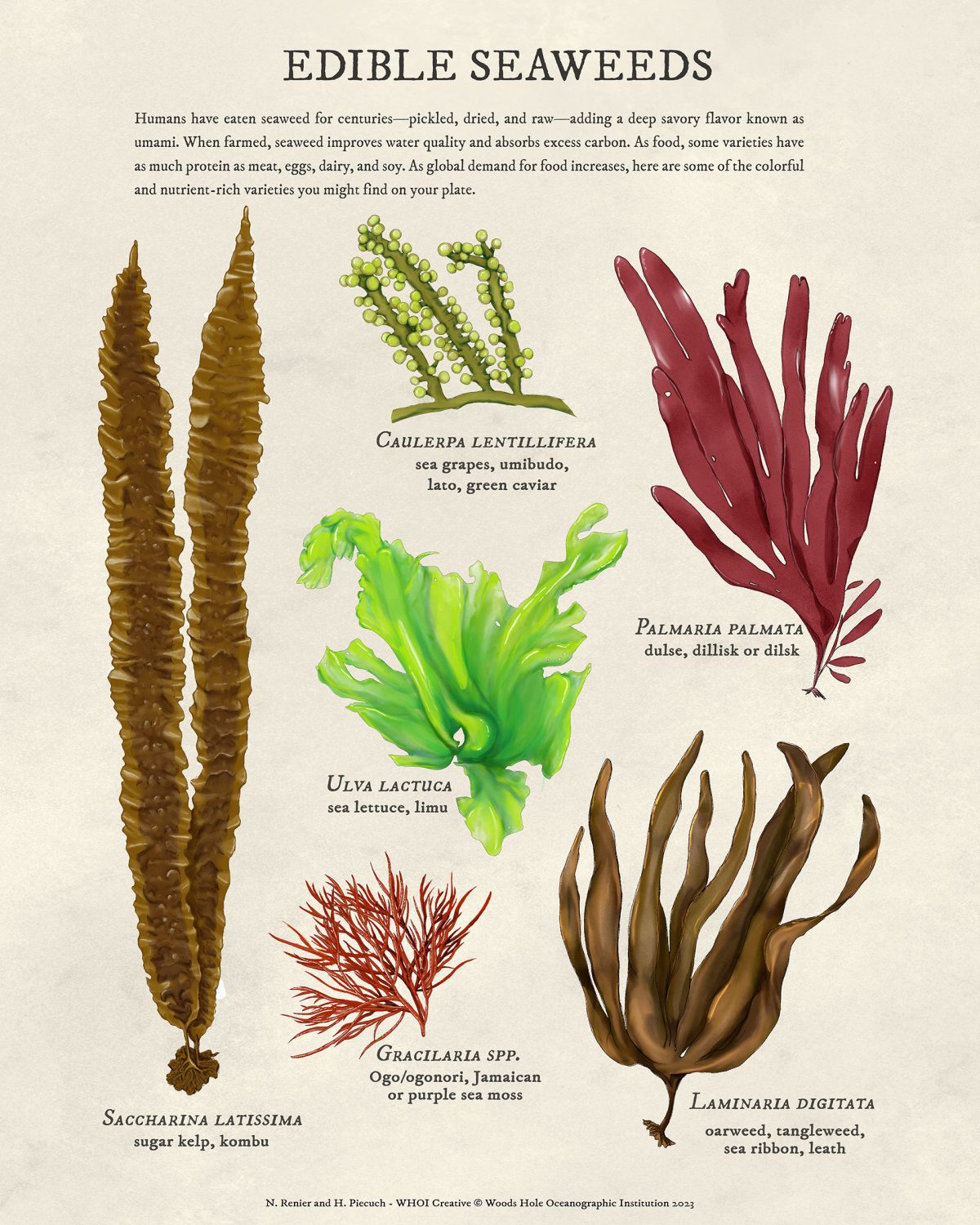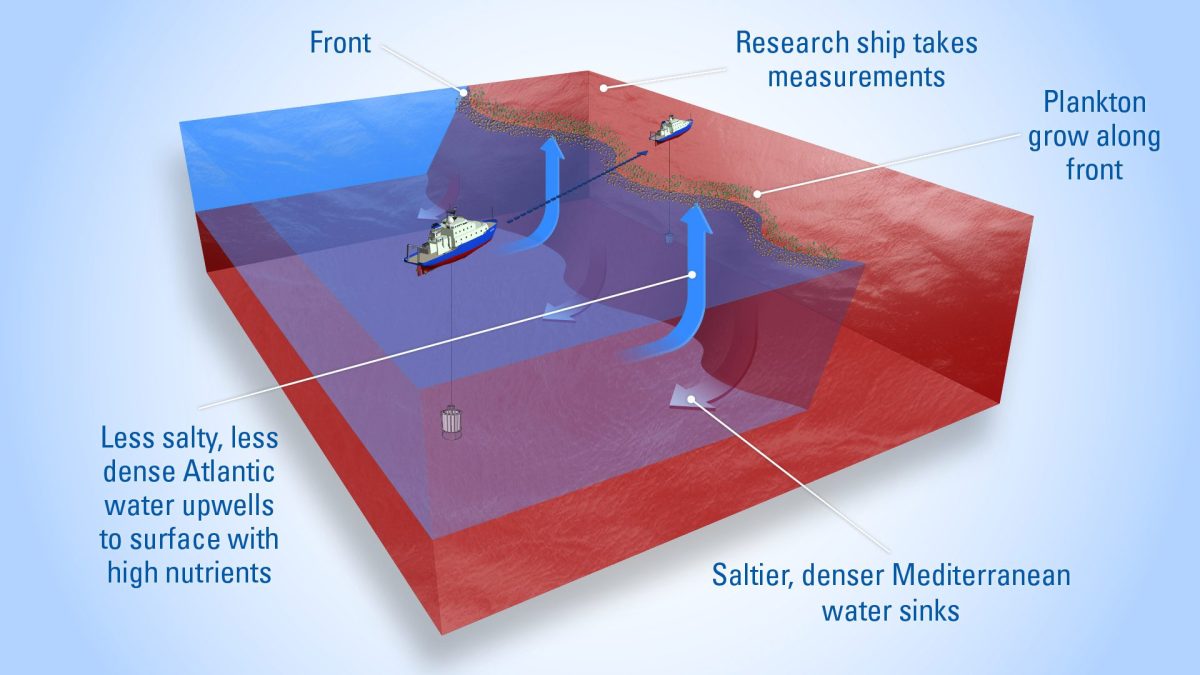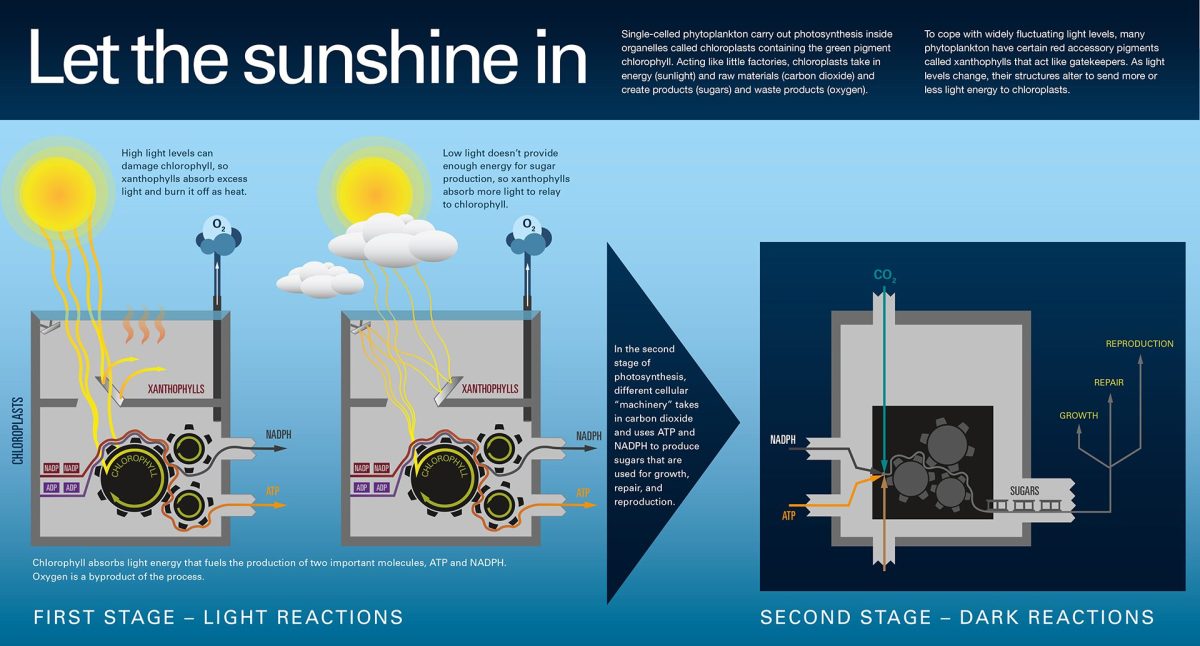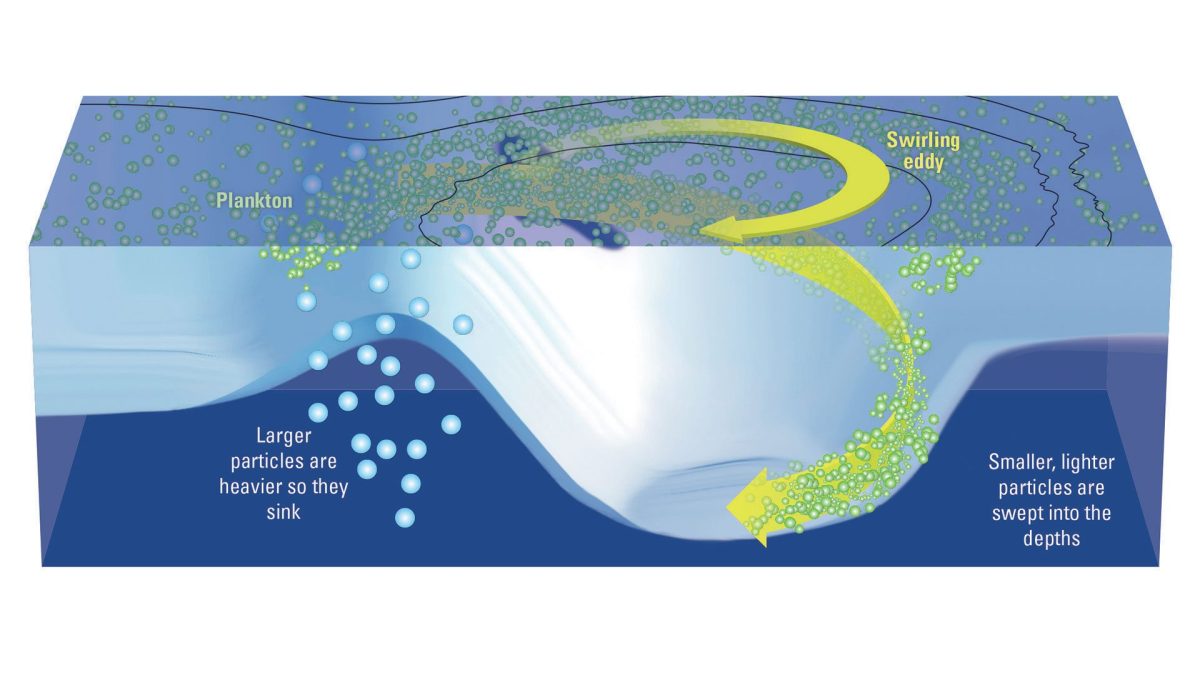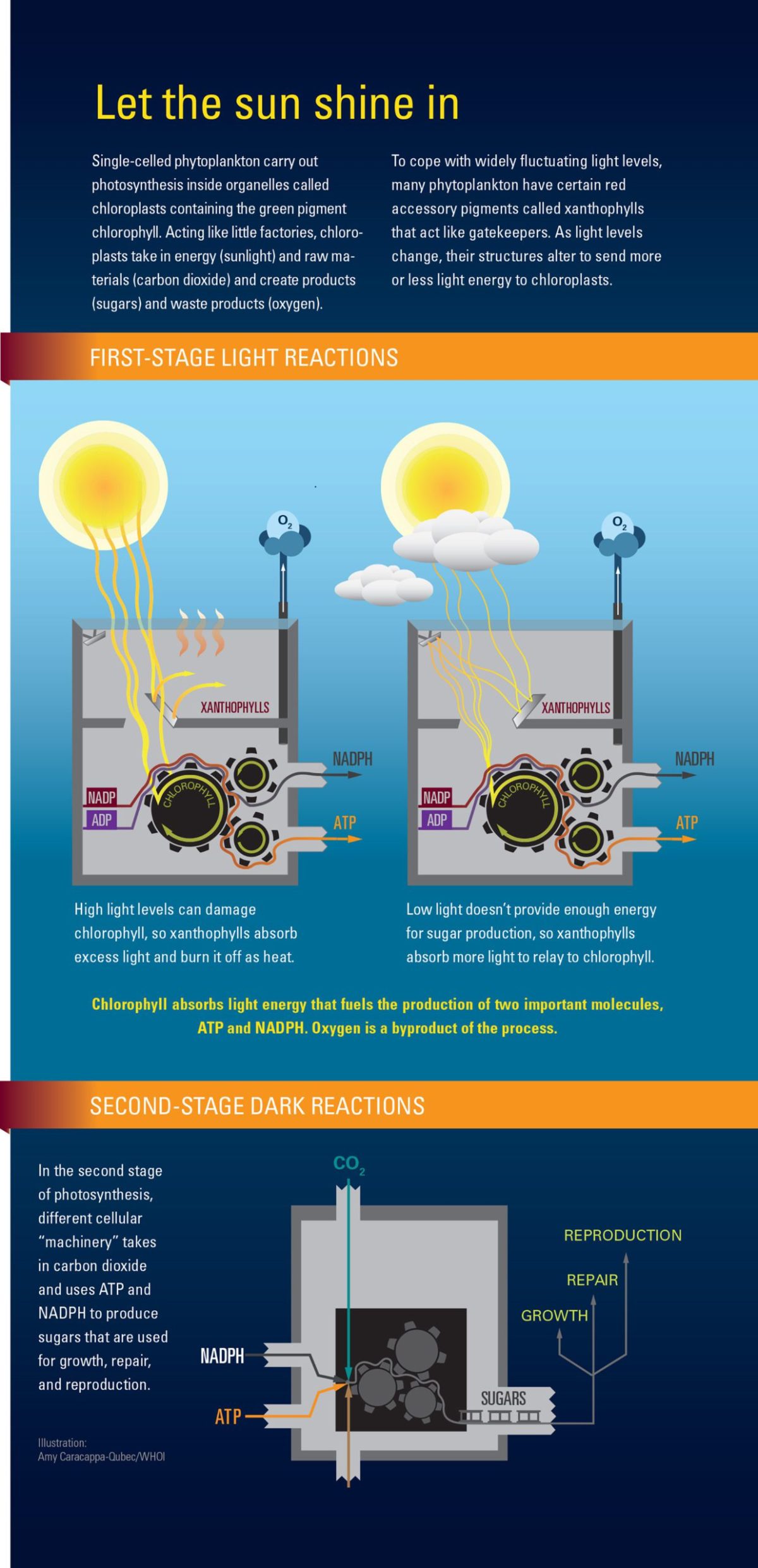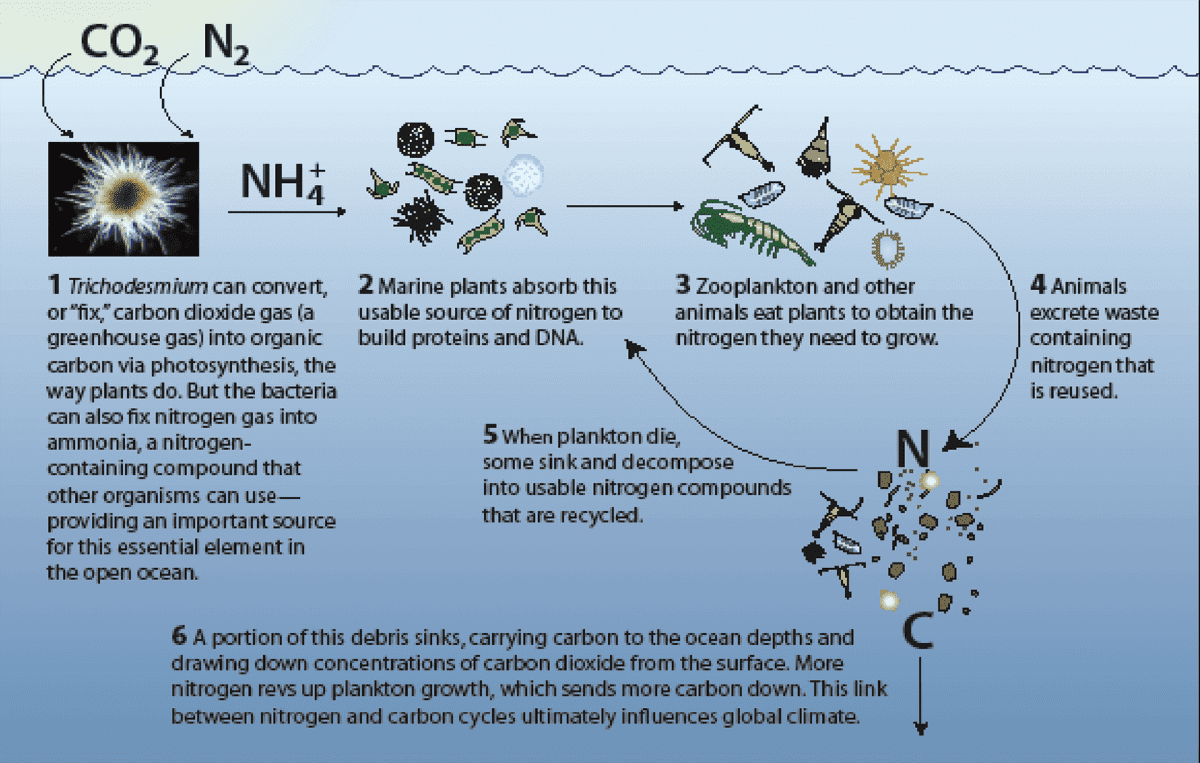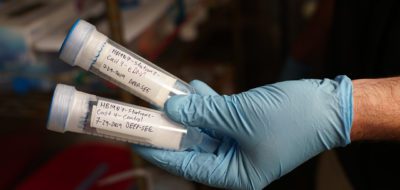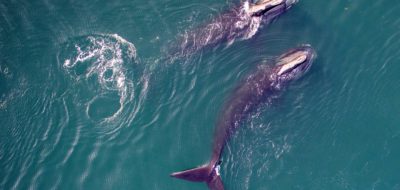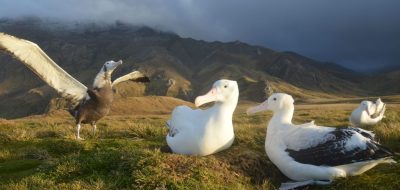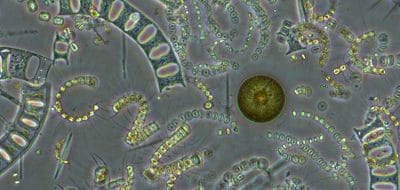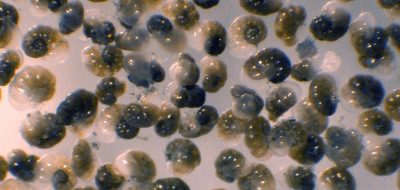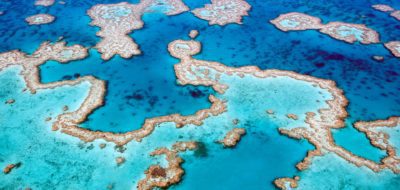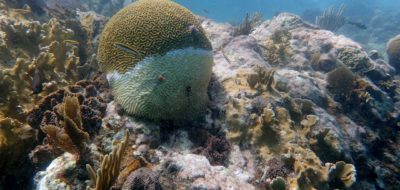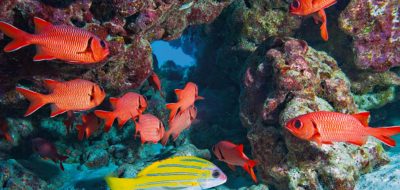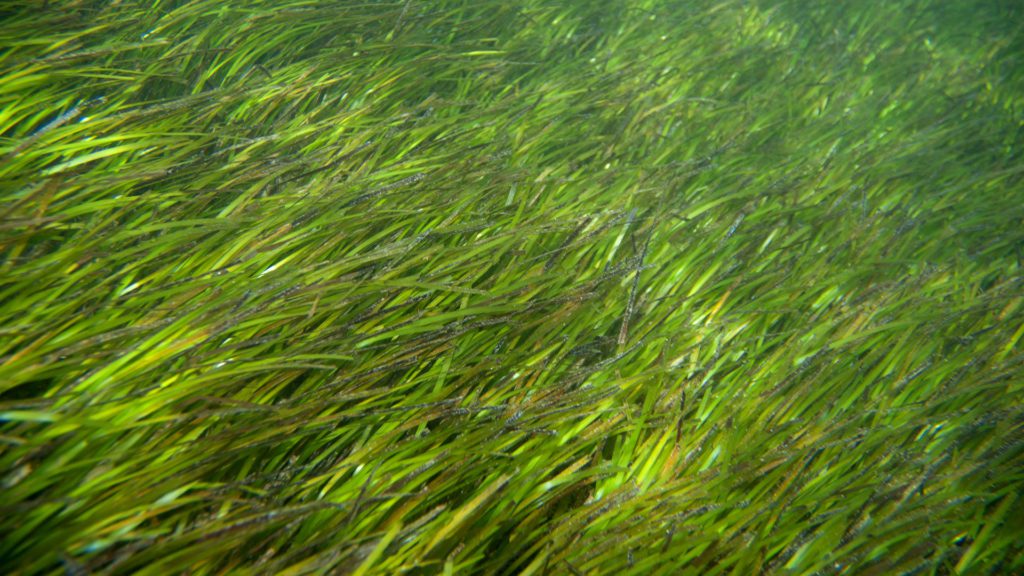
(Credit: Wikimedia Commons)
What are seagrass meadows?
Just off the coast of every continent except Antarctica, hidden meadows abound with life. These underwater ecosystems primarily consist of seagrasses—plants adapted to live a completely submerged life in the salty shallows. Like their terrestrial relatives, many seagrass species have long, slender, blade-like leaves. They are often conflated with seaweed, which is a type of algae, but seagrasses are true plants with root systems that extend into the ground to take up nutrients. They also flower and produce seeds. Under the right conditions, seagrasses can form dense underwater meadows covering large areas of shallow seafloor.
What role do seagrass meadows play in helping mitigate the climate crisis?
Because seagrass meadows trap sediment, organisms that die in the meadow are quickly buried in a submerged, anoxic environment. Without oxygen for decomposition, dead organisms become part of the substrate instead of decaying. As a result, the meadows store large quantities of carbon. A single acre of seagrass meadow can sequester 740 pounds of carbon per year.
Seagrass meadows store an estimated 18 percent of ocean carbon, despite covering just 0.1 percent of the ocean floor. They buffer against ocean acidification and wave energy and have the potential to help marine life adapt to a warming climate. Despite these myriad benefits, seagrass meadows continue to suffer extensive losses, with the area of one football field disappearing every 30 minutes.
What other ecosystem services do they provide?
Seagrass meadows protect against coastal erosion during storms and other large-wave events. The plants’ roots help hold sediment in place and their leaves slow the flow of water, reducing its power and preventing extensive erosion. When wind and water wash sediment from shore, seagrasses trap the incoming particles, preventing them from being washed out to sea. This action improves water quality by removing sediment and dissolved nutrients from the water column, which clarifies and cleans the water
Particles can move in the other direction, as well, replenishing beaches when waves carry sediment onto land. Some of this sediment originated on land, but other particles come from the meadows. It’s not the seagrasses, themselves, that create the sediment. Rather, algae and small invertebrate organisms that live among the grasses produce carbonate particles in a variety of sizes. The larger sand-sized pieces, in particular, contribute to beaches on reef islands.
Like their terrestrial counterparts, seagrass meadows are home to thousands of species. They provide food, shelter, and a safe location for juvenile fish to grow, making these meadows essential nurseries for commercially important species.
Who lives in these ecosystems?
In addition to juveniles of large fishery species, seagrass meadows are home to a wide variety of organisms. Smaller fish may spend most or all of their lives in these meadows, where they remain relatively safe from predators among the leafy canopy. Fish and other mid-level predators find plenty to eat, since the meadows teem with invertebrate life, including clams, scallops, sponges, sea anemones, sea urchins, snails, and more. Bacteria, algae, and smaller invertebrates accumulate on seagrass leaves, creating a feast for larger animals. And the seagrasses, themselves, provide sustenance for herbivores such as sea turtles, dugongs, and manatees.
Seagrass meadows are critically important marine habitat, with one acre providing resources for more than 40,000 individual fish and 50 million invertebrates. More than 20 percent of the world’s fisheries rely on seagrass meadows to provide critical nursery habitat.
Why are seagrasses disappearing, and is there anything that can be done?
Damage to the meadows stems from direct and indirect human activity. Dredging actively destroys meadows, but seagrasses can also be buried by sediment that runs off into the ocean during coastal development. Untreated sewage and fertilizer runoff from urban and agricultural sources triggers excessive growth of algae, which can coat seagrass blades, blocking their ability to photosynthesize. Industrial waste that isn’t properly treated also damages these essential ecosystems.
These issues can be difficult to address; once they are, many seagrass species cannot quickly recover from damage and require active restoration efforts to rebound. This may involve seeding the meadow using seeds collected from healthy seagrass locations or transplanting sprigs from healthy meadows to damaged ones. This can be as simple as putting reproductive shoots in mesh bags attached to buoys, so the seeds, when released, scatter across the desired area. It can involve much more effort, such as mixing seeds with silt and injecting the mixture into the substrate to protect them from erosion while they sprout and take root.
Recent efforts have relied on aquaculture—growing seagrass seedlings in a controlled environment, then transplanting them into struggling meadows. These seedlings seem to survive transplantation better than those taken from established meadows, but anchoring them in place is an issue until they get established. Current efforts include using iron nails to hold them in place or anchoring them to artificial structures that can be lowered into place on the seafloor.
Given the essential role of seagrass meadows in food security and climate change mitigation, these habitats are the focus of extensive efforts to not only reverse declines but also establish new meadows in ideal but previously unoccupied locations.
East, H.K. et al. Seagrass meadows are important sources of reef island-building sediment. Communications Earth & Environment. Vol. 4. 2023. doi: 10.1038/s43247-023-00675-y.
Ondiviela, B. et al. The role of seagrasses in coastal protection in a changing climate. Coastal Engineering. Vol. 87. 2014. doi: 10.1016/j.coastaleng.2013.11.005.
Reynolds, P.L. Seagrass and Seagrass Beds. Smithsonian. https://ocean.si.edu/ocean-life/plants-algae/seagrass-and-seagrass-beds
Tan, Y.M. et al. Seagrass restoration is possible: Insights and lessons from Australia to New Zealand. Frontiers in Marine Science. Vol. 7. August 2020. doi: 10.3389/fmars.2020.00617.
UNEP. Seagrass Meadows. https://www.unep.org/topics/ocean-seas-and-coasts/blue-ecosystems/seagrass-meadows

